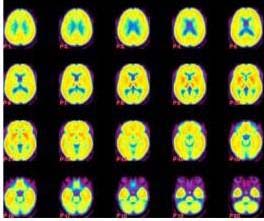 Methamphetamine is one of the most addictive and neurotoxic drugs of abuse and it produces large increases in dopamine, a brain chemical associated with feelings of pleasure and reward — both by increasing dopamine’s release from nerve cells and by blocking its reuptake.
Methamphetamine is one of the most addictive and neurotoxic drugs of abuse and it produces large increases in dopamine, a brain chemical associated with feelings of pleasure and reward — both by increasing dopamine’s release from nerve cells and by blocking its reuptake.
Using positron emission tomography (PET) to track tracer doses of methamphetamine in humans’ brains, scientists at the U.S. Department of Energy’s (DOE) Brookhaven National Laboratory found that meth was slow to clear the brain.
“This slow clearance of methamphetamine from such widespread brain regions may help explain why the drug has such long-lasting behavioral and neurotoxic effects.” Methamphetamine is known to produce lasting damage not only to dopamine cells but also to other brain regions, including white matter, that are not part of the dopamine network” stated chemist Joanna Fowler, lead author on the study.
Studies by Fowler and others have shown that drugs that produce greater elevations in brain dopamine tend to be more addictive. But other factors, including the speed with which a drug enters and clears the brain and its distribution within the brain, can also be important in determining its addictive and toxic potential.
More info: sciencedaily.com/releases/2008/10/081014111303.htm
Review this Julia Ross Video: Meth Treatment That Works
0 responses so far ↓
There are no comments yet...Kick things off by filling out the form below.
Leave a Comment